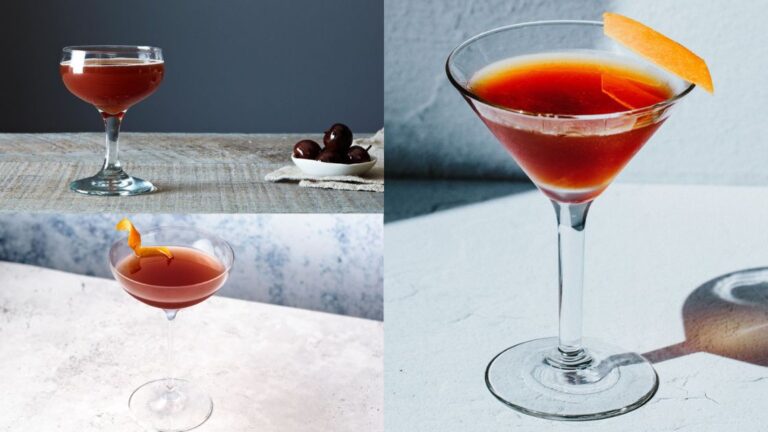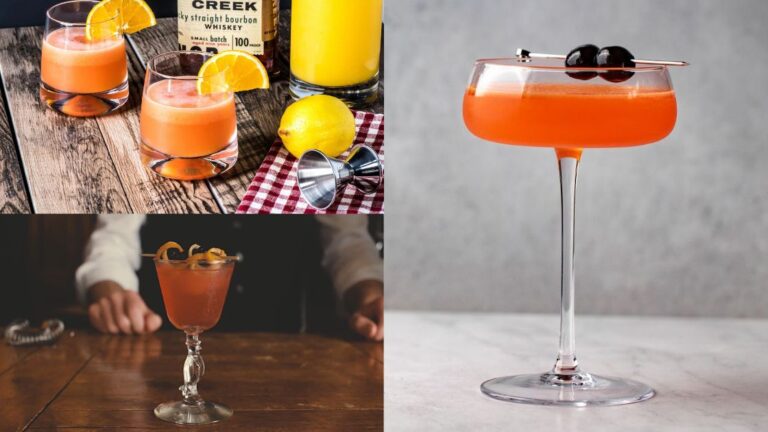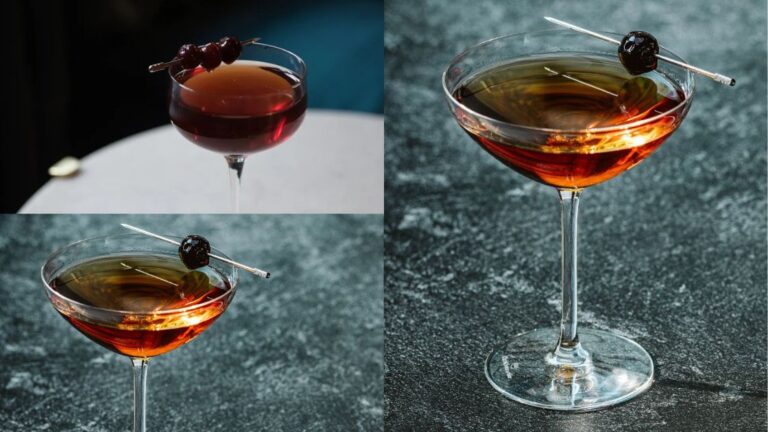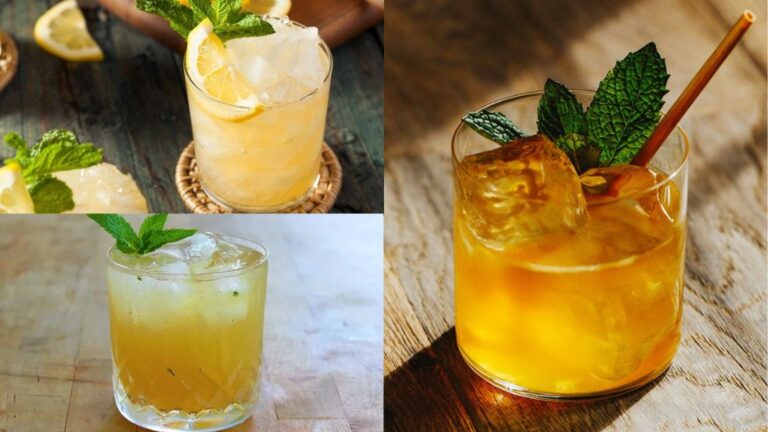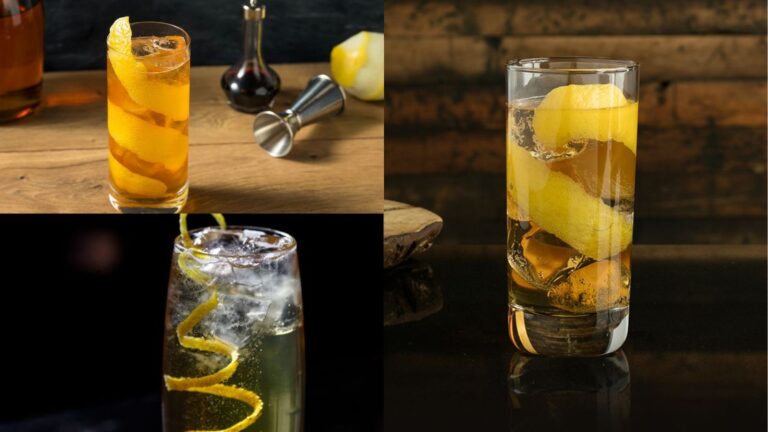Rye Whiskey is a type of whiskey made predominantly from rye grain. The grain’s distinctive qualities give this type of whiskey a character that distinguishes it from other varieties. Rye is known for its robust and spicy flavor, which lends a unique richness and depth to the whiskey. There are two main types of Rye Whiskey. The first is American Rye Whiskey, which must be made from at least 51% rye. The second is Canadian Rye Whiskey, which, although historically made predominantly from rye, does not have a legal requirement for the percentage of rye used. However, both types deliver a spicier, fuller-bodied whiskey experience compared to their corn-heavy Bourbon counterparts.
Over the following sections, we’ll delve into the rich history, unique production processes, varying types, and tasting profiles of Rye Whiskey, guiding both whiskey connoisseurs and novices alike to a deeper understanding and appreciation of this distinct spirit.
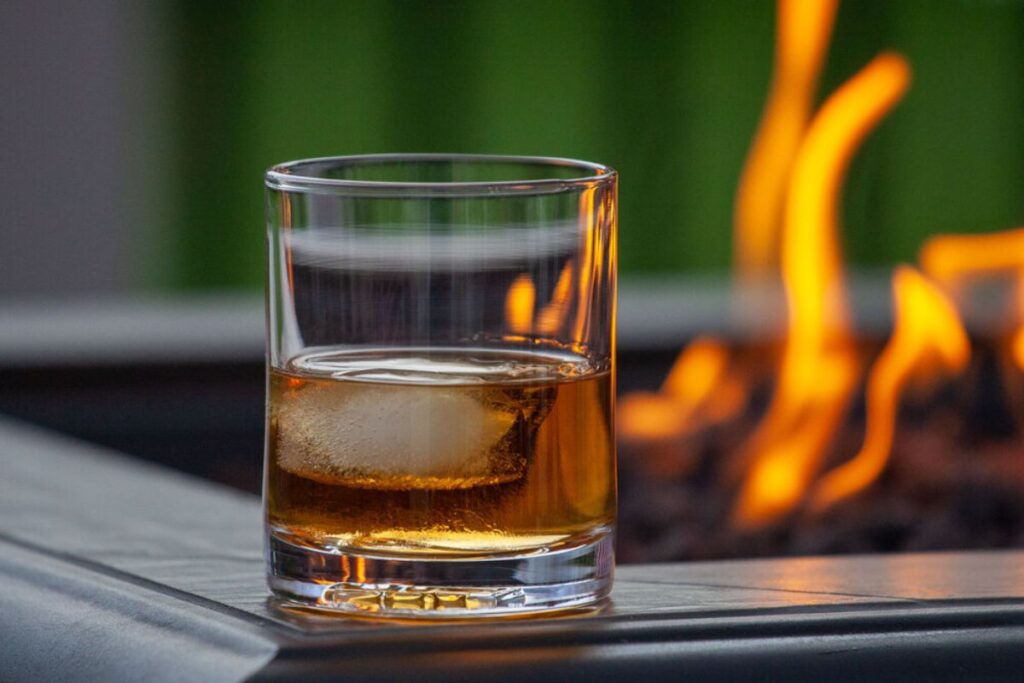
History of Rye Whiskey
Rye Whiskey’s Roots in Europe
Rye Whiskey can trace its roots back to Europe, specifically to regions where rye was a staple grain. Distillation methods were brought over by immigrants, and rye was the choice grain due to its ability to grow in harsher climates, which other grains could not withstand.
Arrival and Popularization in North America
Rye Whiskey found its footing in North America when early European settlers began distilling the grain in the northeastern United States and Canada. In the U.S., states like Pennsylvania and Maryland became well-known for their rye production. In Canada, distillers started producing their own versions of rye whiskey, which often included a mix of grains, with rye adding the characteristic spicy note.
The Role of Rye Whiskey during the Prohibition Era
The Prohibition era, from 1920 to 1933 in the United States, had a significant impact on Rye Whiskey. While the production, sale, and transport of alcohol were generally illegal, certain exceptions were made for medicinal purposes. Physicians could prescribe “medicinal whiskey” to patients, and pharmacies were permitted to sell it. Many whiskey distilleries managed to stay in business during this time by securing medicinal whiskey permits. Rye Whiskey was one of the types of whiskey frequently dispensed in this way.
Current Resurgence and Popularity
Rye whiskey’s popularity declined after Prohibition because it was up against tough competition from other alcoholic beverages like Bourbon and vodka. However, the popularity of Rye Whiskey has significantly increased over the past couple of decades. This renaissance can be attributed to a variety of things, including the popularity of craft cocktails, which frequently feature Rye Whiskey, a rise in demand for artisanal and locally produced spirits, and a general trend towards stronger, more flavorful spirits.
From its modest beginnings in Europe, through the hardships of Prohibition, to its current status as a beloved spirit enjoying a well-deserved revival, the history of rye whiskey is one of adaptation and resiliency.
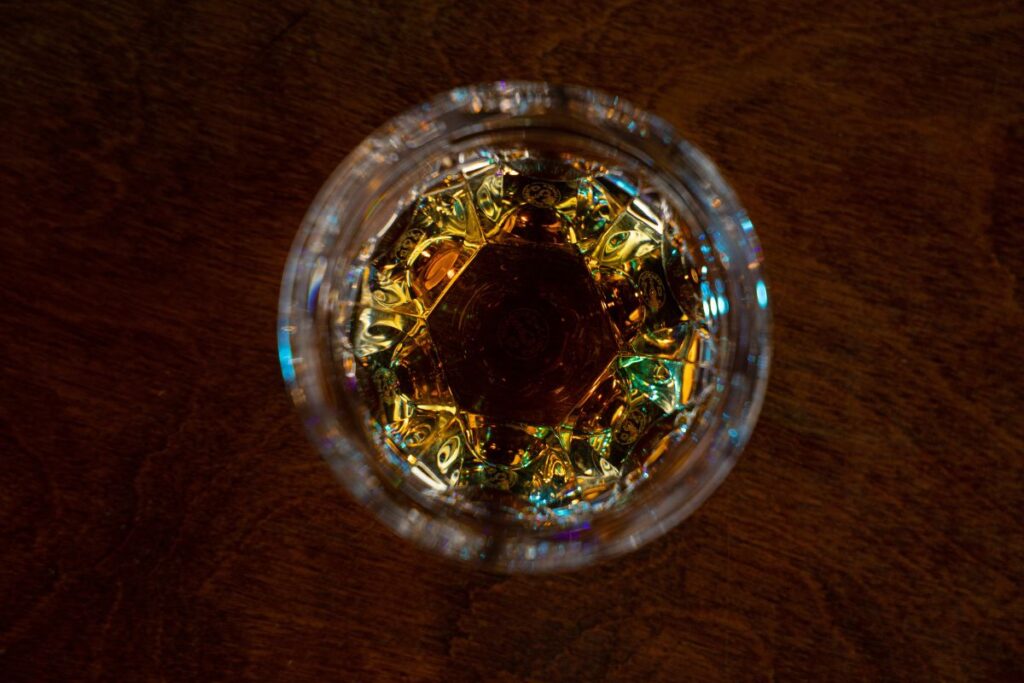
The Process of Making Rye Whiskey
Rye Whiskey is a complex and flavorful spirit with a production process that requires a meticulous blend of science and art. The raw materials, the distillation method, and the aging process all play crucial roles in the final product’s characteristics.
Raw Materials
The star of the Rye Whiskey show is, undoubtedly, rye grain. Rye imparts a distinctive flavor profile, characterized by its spicy and slightly fruity notes. Other grains in the mash bill include barley, corn, or wheat. But it’s the rye that gives this whiskey its unique character!
Distillation Process
After the rye and other grains are harvested, they are milled and mixed with hot water to create a mash. The purpose of this step is to convert the starches in the grain into fermentable sugars. The mash is then cooled and yeast is added, which consumes the sugars and produces alcohol, a process known as fermentation.
The liquid resulting from fermentation, known as the wash, contains approximately 8-10% alcohol. The wash is distilled to concentrate the alcohol and remove impurities. The distillate, or “new make spirit”, is then collected and prepared for aging.
Aging Process
The aging process is where Rye Whiskey develops its complexity and depth of flavor. The new make spirit is transferred to charred oak barrels, where it will remain for several years. During this time, the whiskey absorbs compounds from the wood, such as lignin, lactones, and tannins. These compounds contribute to the spirit’s color and flavor profile. The aging process also mellows the harshness of the spirit, rounding out its taste and aroma.
Regulations in Different Countries
The regulations for Rye Whiskey production vary by country. In the United States, Rye Whiskey must be made from a mash that is at least 51% rye. The spirit must be distilled to no more than 160 proof and aged in new, charred oak barrels at no more than 125 proof.
In contrast, Canadian Rye Whiskey regulations do not specify a minimum percentage of rye in the mash bill. However, Canadian Rye Whiskeys often still use a high proportion of rye, and they must also be aged in oak barrels for a minimum of three years.
These differences in regulation and tradition result in a variety of styles and flavors within the category of Rye Whiskey, providing an intriguing array of options for whiskey lovers to explore.

Different Types of Rye Whiskey
American Rye Whiskey
American Rye Whiskey, as regulated by U.S. law, must be made from a mash that consists of at least 51% rye grain. The remaining percentage can include other grains like corn or malted barley. It must be distilled at no more than 160 proof and aged in charred, new oak barrels at no more than 125 proof. If the whiskey is aged for two or more years, it can be termed as ‘straight’ rye whiskey. American Rye Whiskey is known for its bold, spicy, and somewhat fruity flavor, derived from the high concentration of rye.
Canadian Rye Whiskey
Canadian Rye Whiskey, on the other hand, has a more flexible set of regulations. Canadian law does not specify a minimum rye grain content to label the spirit as rye whiskey. As a result, Canadian Rye Whiskeys can sometimes contain less rye than their American counterparts, although many still use a high-rye mash bill. They must be aged in oak barrels for at least three years. Canadian Rye Whiskeys are often smoother and lighter, characterized by a subtle spiciness and notes of caramel and vanilla.
Differences in Production and Flavor Profiles
The primary differences between American and Canadian Rye Whiskey lie in their production regulations and resulting flavor profiles. American Rye, with its mandated minimum rye content, often showcases a bolder, spicier flavor. In contrast, Canadian Rye can offer a broader spectrum of taste experiences due to the more flexible rules regarding rye content, but they usually feature a softer, smoother profile.
The precise mash bill composition, the yeast strains used in the fermentation, the distillation process, the aging process, and even the specific climate conditions of the distillery’s location can all have an impact on the flavor of a rye whiskey. This variety adds to the wide range of rye whiskey options by providing something for every taste.

Tasting and Enjoying Rye Whiskey
The flavor profile of Rye Whiskey is typically described as robust and full-bodied, marked by a distinctive spiciness attributed to the rye grain. It often showcases notes of pepper, cinnamon, and clove, along with underlying hints of caramel, fruit, and toasted grain. The aging process imparts additional depth to the whiskey’s flavor, adding nuances of vanilla, oak, and sometimes smoke or char.
When tasting Rye Whiskey, it’s recommended to use a tulip-shaped glass to concentrate the aroma towards your nose. Take a moment to appreciate the color and the ‘legs’ (the slow drips that slide down the inside of the glass after a gentle swirl) as these can give an indication of the whiskey’s age and alcohol content.
Then, take a gentle sniff to identify the aromas. Remember to keep your mouth slightly open to prevent the alcohol fumes from overwhelming your senses. Take a small sip and let it coat your palate to discern the various flavor notes. The initial taste (the ‘attack’), the evolving flavors you perceive as you hold the whiskey in your mouth (the ‘mid-palate’), and the aftertaste (the ‘finish’) can all offer different aspects of the whiskey’s character.
Rye Whiskey pairs wonderfully with a variety of foods. The spirit’s robust flavors can stand up to rich, hearty dishes like barbecued meats or sharp cheeses. On the sweeter side, Rye Whiskey also pairs well with dark chocolate, which can complement and balance the whiskey’s spicy notes.
Rye Whiskey is also a classic ingredient in many iconic cocktails. The Manhattan, for example, combines Rye Whiskey with sweet vermouth and bitters to create a balanced, sophisticated drink. The Old Fashioned, another classic cocktail, uses Rye Whiskey along with sugar, bitters, and a twist of citrus. The spicy, bold flavors of Rye Whiskey add depth and complexity to these and many other cocktail recipes.
Whether sipped neat, paired with food, or mixed into a cocktail, Rye Whiskey offers a versatile and flavorful experience for whiskey enthusiasts.

The Future of Rye Whiskey
Rye Whiskey has witnessed a significant revival over the past couple of decades, and current market trends suggest that its popularity is set to continue rising. This resurgence is partly fueled by a broader trend toward premium and super-premium spirits, with consumers showing increasing interest in higher-quality, artisanal products.
In particular, there’s been a growth in the craft distilling sector. Small-scale distilleries have been experimenting with different types of rye and distillation techniques to create unique, high-quality Rye Whiskeys. Many of these distilleries are also emphasizing local sourcing and sustainability in their production processes, appealing to modern consumers’ values.
Another trend is the rising demand for Rye Whiskey in cocktails. As the craft cocktail movement continues to grow, bartenders are rediscovering rye’s potential as a versatile, flavorful base spirit. Classic rye-based cocktails like the Manhattan and the Old Fashioned are enjoying a renaissance, and innovative new rye cocktails are continually being created.
Looking forward, the Rye Whiskey industry is projected to continue its growth. As consumers become more educated about different whiskey types and develop a more sophisticated palate, the demand for the robust, complex flavors of Rye Whiskey is expected to increase. Additionally, as more distilleries experiment with rye and bring new products to the market, the variety and quality of Rye Whiskeys available to consumers will likely continue to improve.
Of course, the future of any industry is always uncertain, and unforeseen factors could potentially impact these projections. However, given the current trends, the future looks bright for Rye Whiskey.
Conclusion
Rye Whiskey, with its robust flavor and rich history, has captivated enthusiasts and connoisseurs alike. Rooted in European traditions, it made its way to North America and swiftly established itself as a favored spirit, enduring through periods of turmoil like the Prohibition era. Today, Rye Whiskey is enjoying a significant resurgence as modern palates rediscover and appreciate its unique characteristics.
This unique spirit offers a spectrum of experiences, from the bold, spicy profile of American Rye Whiskeys to the more nuanced, smoother expressions of Canadian Rye Whiskeys. The distinctiveness of Rye Whiskey extends to its production, where variations in the mash bill, fermentation, distillation, and aging processes culminate in a broad range of flavors to explore.
Rye Whiskey’s versatility shines in its pairing possibilities with food and its prominent role in classic and innovative cocktails. With the current trend towards premium spirits and the growing interest in artisanal, locally sourced products, Rye Whiskey’s popularity is set to rise further.
Rye Whiskey is more than just a drink—it’s a testament to historical resilience, a showcase of grain’s transformation, and a celebration of sensory complexity. As we raise a glass to the future of Rye Whiskey, we also toast to the distillers who continue to innovate while respecting the spirit’s storied past. Here’s to the continued journey of Rye Whiskey, as robust and enduring as the grain at its heart.

